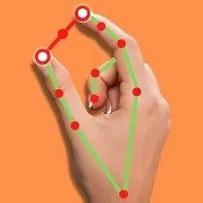Sign language into text
Bringing silent gestures to life: Transforming sign language into text.
Created on 2nd April 2023
•
Sign language into text
Bringing silent gestures to life: Transforming sign language into text.
The problem Sign language into text solves
The problem it solves is the translation of sign language into text, which can help bridge the communication gap and allow for more effective communication between people who use sign language and those who do not. This can improve access to information, education, and social interactions for people who are deaf or hard of hearing, and promote greater inclusivity and understanding in society.
Challenges I ran into
Variations in sign language: Sign language can vary between different regions and communities, which can make it difficult to create a universal sign language translation system that works for everyone.
Technical limitations: Developing accurate sign language recognition and translation technology can be complex, and there may be technical limitations to the accuracy and speed of the system.
Cultural sensitivity: Sign language is an important part of deaf culture, and it is important to be sensitive to the needs and perspectives of the deaf community when developing sign language translation technology.
Accessibility: Making sign language translation technology accessible to everyone who needs it can be a challenge, particularly for people who may not have access to the necessary technology or resource
Technologies used
